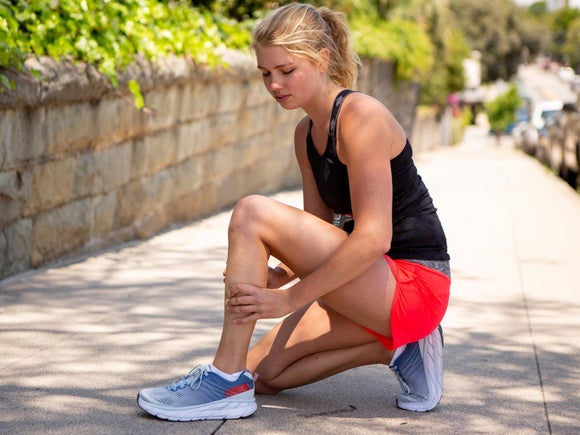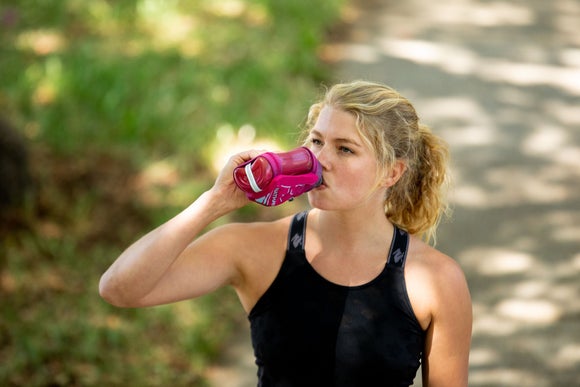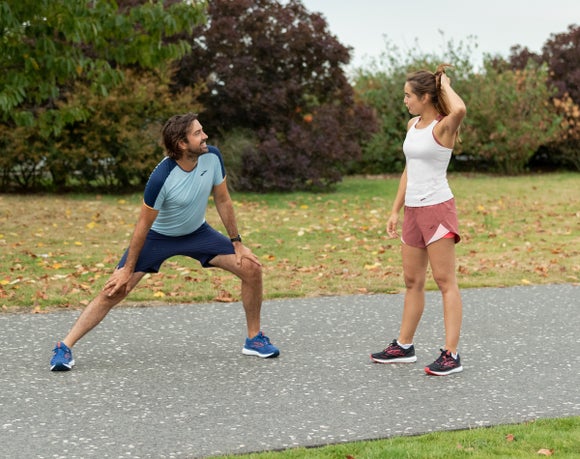Top 5 Tips to Prevent Running Cramps
Why Your Legs Cramp and How to Avoid It
Updated: 2 September 2024

Whether you are a beginner runner or a seasoned athlete, we have all experienced the agonising discomfort of muscle cramping at some point while running. From an annoying disruption to crippling pain, cramps can derail and abruptly halt your workout. But cramping when running can be avoided by implementing preventative measures such as a balanced intake of water and electrolytes, stretching out the muscles, easing into training, and maintaining proper running form. In this article, we help explain what causes cramping and provide runners with five practical steps on how to prevent cramps for a pain-free and enjoyable run.
Understanding Running Cramps
Running cramps are painful, involuntary, and uncontrollable muscle contractions that occur suddenly. Symptoms include temporary immobility of the affected muscle due to the forcible tightening of the skeletal muscles that spasm and can't relax. The muscle spasms can range in intensity and may twitch or appear visibly distorted (depending on the area affected).
The most common type of cramp is muscle cramping in the legs, specifically the calves (known as charley horses), quads, hamstrings, and feet. Additionally, some runners experience abdominal cramping on the side of their body, otherwise referred to as side stitches.
Due to the painful and sudden nature of cramps, your running performance and overall enjoyment are adversely impacted, sidelining your training mid-run and throwing you off your rhythm.
1. Stay Hydrated & Keep Cool
Maintaining proper hydration is one of the most crucial steps in preventing muscle cramps. Dehydration causes blood flow to decrease, which lowers the oxygen supply to your muscles, contributing to cramping.
In addition, overheating can trigger cramps due to the loss of nutrients from excess sweat. Seek cooler and shaded environments when running, and wear moisture-wicking clothing for breathable protection. And on those especially hot runs, you can pour water over your head and neck to lower your body temperature and prevent heat-related illnesses.

2. Maintain Electrolyte Balance
Conversely, drinking too much water can dilute your body's electrolytes and lead to serious health complications. Balance is key when it comes to your fluid and nutrition intake. Drink according to thirst and be aware of your electrolyte levels. Especially on long runs or hot days, consider supplementing with electrolyte tablets and energy drinks to replenish lost sodium, carbohydrates, and essential electrolyte minerals.
Properly refuel your body with pre-run and post-run meals. Eat foods rich in nutrients such as potassium, calcium, or magnesium that support muscle function, along with protein and carbs to aid recovery.
3. Warm Up and Stretch
Another contributing factor to cramping is not properly warming up and stretching before you run. Before hitting the pavement, take a few minutes to warm up your muscles and prep your brain and body to transition from resting mode to running mode. Check out our Best Warm-Up For Runners article for some quick, light exercises to get you started.

4. Gradual Increase in Intensity
As mentioned above, your body needs to prepare for the force and high impact of running. Firing on all cylinders right out of the gate is not wise, as sudden changes can strain and fatigue muscles and lead to cramps. Running too fast too soon also inhibits your breathing, which can cause side stitches and abdominal cramps. Be mindful to breathe from your diaphragm instead of taking shallow breaths from your chest.
Adjusting your pace and gradually increasing your running intensity and distance is vital for avoiding cramps and injuries. Especially if you're a beginner runner or returning after a break from running, ease into your training by starting with shorter distances and speeds, then gradually build up your intensity and mileage.
5. Proper Running Form
Improper running form can strain muscles and cause cramps, so it's critical to maintain good posture, stride, and foot strike when running.
Wearing the right shoes affects your running form as well, so be sure to lace into running-specific shoes that are the right size and fit and offer you support where you need it.
Seek professional advice to help you discover your gait, foot type, and running style to get the best shoes for your specific needs.

Listen to Your Body
Above all, pay attention to your body's warning signals. If you feel a cramp coming on, stop and stretch the affected area immediately and gently massage the muscle. If you're experiencing pain or fatigue, don't push on through. Give your body time to recover by taking rest days to prevent the overuse of muscles, which leads to injuries, leaving you sidelined for longer. Whether cross-training at the gym or going for a swim, there is great value in incorporating a variety of workouts to strengthen your muscles and core, help build stamina, and improve your conditioning and range of motion.
Ultimately, to best prevent running cramps, you need to cover all your bases by monitoring your hydration and electrolyte intake, warming up and training at an appropriate level to reach your goals with proper running form, and lastly, take the time to stretch out your muscles afterward with a foam roller to help relax and restore muscle balance. If you continue to experience severe and persistent cramping, consult a health professional for further evaluation and treatment.


